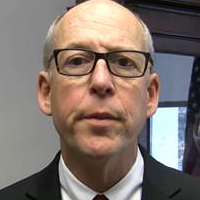Republican Blows up His Own Long-Sought Klamath River Agreement
 Congressman Greg Walden
Congressman Greg Walden
After years of intractable acrimony over how to manage the Klamath River in Northern California and Southern Oregon, all the warring parties reached an accord last year to keep utilities, farmers, ranchers, native tribes, the fishing industry, sportsmen, environmentalists, government officials from two states and, most importantly, a key congressman from the area happy when four dams are taken apart.
The four senators from the two states capped five years of congressional negotiations and introduced legislation in January based on three agreements signed by stakeholders. The deadline for passage of legislation is December 31, when authorization for the agreements dissolves.
But last week, it was reported that legislation had been submitted by Representative Greg Walden (R-Oregon), a supporter of the agreement from the Upper Klamath Basin and the House’s third-most-powerful member, that would probably wreck it.
Walden, a prominent Tea Party member, introduced a House version of the bill that doesn’t take the four dams down and adds an unrelated provision to give 200,000 acres of federal timberland to two counties on the border. Conservatives don’t like to tear dams down, especially for things like conservation, and they like indiscriminate tree hacking.
The world has changed since 2008, when Walden praised the agreement’s negotiators (“they deserve a medal”) and said, “I've always felt the best and longest-lasting solution would come from the various parties in the basin working out a plan that made sense for all concerned.”
He doesn’t feel that way anymore.
In February 2009, CNBC reporter Rick Santelli went on an epic rant on the floor of the Chicago Board of Trade over President Barack Obama’s just-announced housing bailout plan that was aimed at homeowners, not bankers. Overnight, the already-increasingly-conservative GOP rebranded itself as a radical party anxious to throw conventional politics of negotiation overboard and muscle through a more narrow, ideologically-based agenda.
The four dams, three of which are in California’s Siskiyou County, provide energy for private utilities and facilitate farming irrigation. But they also negatively impact wildlife and historic runs of salmon and other fish, which became an issue after passage of the Endangered Species Act in 1973. It was signed into law by Republican President Richard Nixon. The dams also cause toxic algae blooms in stagnant lake water.
Democrats and opponents of the dams said they will try to have them removed through the Federal Energy Regulatory Commission (FERC) relicensing process. Some folks think the company that operates the dams will tear them down when faced with retrofit regulations. Studies show it’s cheaper.
Few people think Congress will pass anything soon.
–Ken Broder
To Learn More:
A Deal to Remove Four Klamath River Dams Is in Danger of Collapse (by Bettina Boxall, Los Angeles Times)
Tea Party Republican Decides to Wreck Klamath River Agreement Just for the Hell of It (by Kevin Drum, Mother Jones)
How a Stunning Klamath Basin Water Agreement Has Been Doomed by Lawmakers (by Jacques Leslie, Los Angeles Times op-ed)
With Klamath Bill Uncertain, Dam Relicensing Moves Forward (by Gosia Wozniacka, Associated Press)
- Top Stories
- Controversies
- Where is the Money Going?
- California and the Nation
- Appointments and Resignations
- Unusual News
- Latest News
- California Forbids U.S. Immigration Agents from Pretending to be Police
- California Lawmakers Urged to Strip “Self-Dealing” Tax Board of Its Duties
- Big Oil’s Grip on California
- Santa Cruz Police See Homeland Security Betrayal in Use of Gang Roundup as Cover for Immigration Raid
- Oil Companies Face Deadline to Stop Polluting California Groundwater





